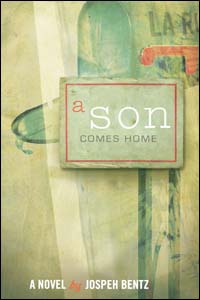Several months ago I made a foolish comment on Seekerville. I can't even remember just what the post was all about now, something to do with too many characters or secondary characters in a novel. They asked for our personal opinion and me, in my foolish naivete said: I prefer secondary characters that are like cardboard cutouts. A prop for the main character.
Wait a minute! Hold the phone!
Did I just say what I think I said? And tell me, I did NOT put that into print!
Yes, it was in print and I, a-hem, hope and pray that comment does not come back to bite me.
So today I bursting my own myth (and maybe yours too) that secondary characters are cardboard cutouts.
Before we get into this, what exactly is the role of a secondary character?
~To give the hero/heroine someone to talk to or propel them forward on their journey
~A diversion from the hectic pace of the main characters
~A friend for the main character, a reason for them to be more than just talking heads
~All of these variables and the role a secondary character plays will depend on how much of a role you give him/her
Secondary characters are anything but cardboard characters or props if you really want your fiction to shine and your story to leap from the page.
While a full bio is probably unnecessary on secondary characters, understanding their role in your main character's life is. What is the dynamic in their friendship? Have they been friends since childhood? This is important to know, because if they have had a history spanning so much time, the friend is going to be more apt to speak her mind and let her friend (the main character) know what she thinks for a particular situation.
You have to think of their relationship. What role do you want this secondary character to play? A bully? A close friend? A co-worker? The pastor of the local church? Each of these characters have to have a reason to be in the story. They have to move it forward in some way.
You are naturally going to have the character that stands in front of the heroine at Starbucks and drones forever with the clerk about the rising price of her favorite latte, and this can add tension for the heroine who maybe is running late for an important job interview, but can't think straight without her morning jolt. But will this character really need any fleshing out beyond this point? Probably not if she is just a walk on/ walk off extra.
But the characters that move the hero/heroine's life forward, are the ones that need the fleshing out. They are the sidekick or the one they fall back on for advice. After the black moment has hit and they need someone to talk to, you send them to this character who will send them on their journey of faith (or not depending the relationship. This can had more conflict, but ultimately in Christian fiction something will have to send them on their faith journey. You as the author will have to decide what that is.)
But to keep these secondary characters from becoming stale and lifeless, you have to give them a reason to live in your story. They just can't be an extra. They have to have a history with the main character. And you have to find that history out. Learning the dynamics of a relationship so you will know as an author how the two will interact makes a huge difference to the believability of your story.
But, say, you have a co-worker that sits in the cubicle next to you and always plays KLOVE on her computer softly, leaves encouraging notes, polite, loving and godly? Now what if your main character isn't and this person drives them batty like fingernails on a chalkboard? That is a great relationship to have. Because what if this hero/heroine is all alone in life and when they hit that black pool of despair, who are they going to turn to? How about the young woman in the cubicle over who has always shown Christ's love even in the face of your main character's persecution?
Secondary characters and their roles for the story come from every place and circumstance. The best thing that you can have happen to a story, I think, is to be writing it and the secondary characters try to take over. It is because you have fleshed them out to such a degree that they want a story of their own. They have needs, desires, trials and a story to tell, but they must wait their turn. Remind them of that, otherwise they will jump in and take over.
But if you have secondary characters that do that in your story, consider yourself blessed. You have truly created characters that will compliment your hero/heroine and breathe life into your story.
This marks the end of my Myth Buster (cue dramatic music here) series. Was it helpful? Did you enjoy the theme? I would love to hear your thoughts. And do tell about your secondary characters as well. Have you had one take over a story? Are they begging for a spot in the limelight? Don't deny them too long. :-)



































































